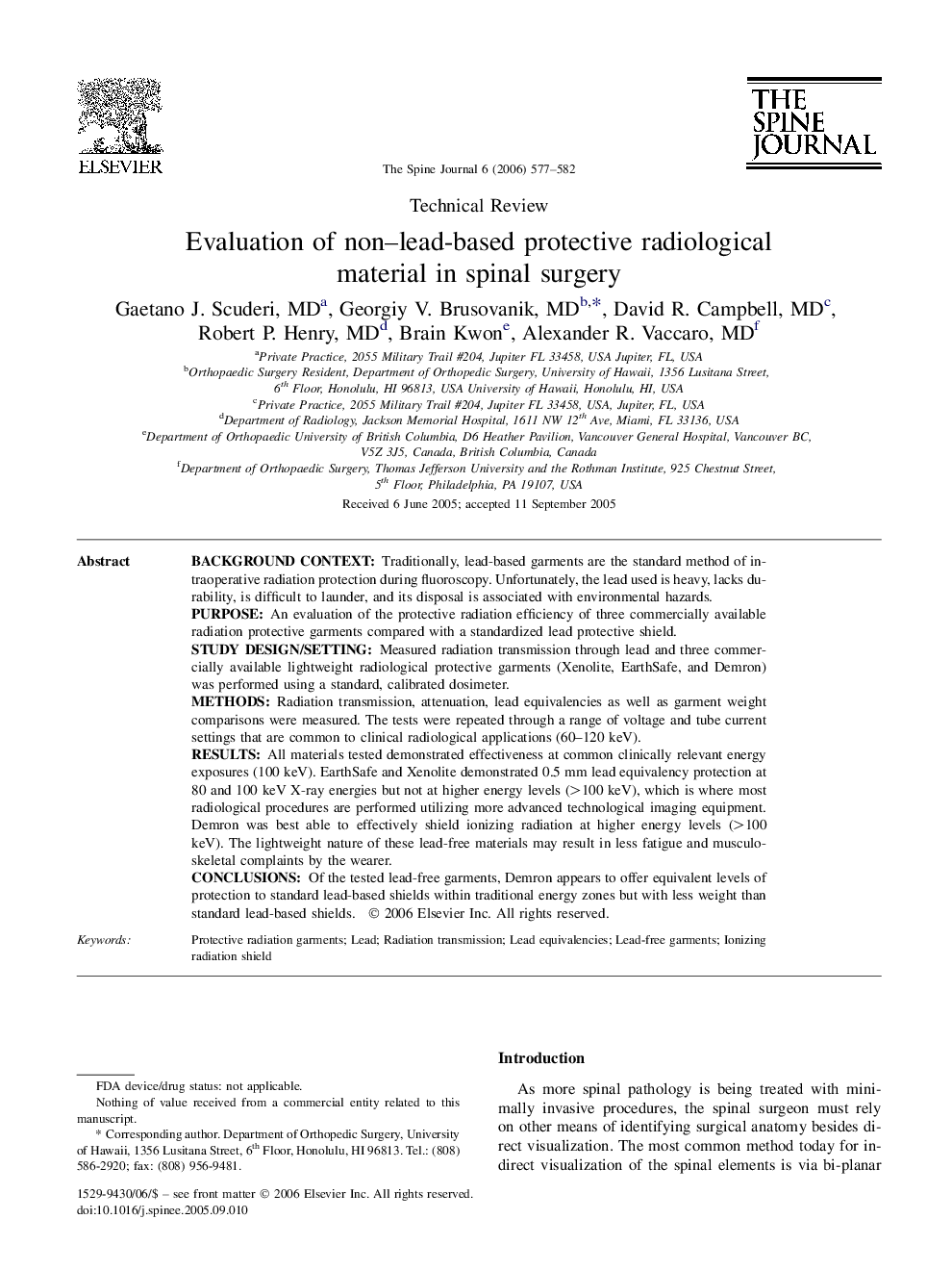| Article ID | Journal | Published Year | Pages | File Type |
|---|---|---|---|---|
| 4100286 | The Spine Journal | 2006 | 6 Pages |
Background contextTraditionally, lead-based garments are the standard method of intraoperative radiation protection during fluoroscopy. Unfortunately, the lead used is heavy, lacks durability, is difficult to launder, and its disposal is associated with environmental hazards.PurposeAn evaluation of the protective radiation efficiency of three commercially available radiation protective garments compared with a standardized lead protective shield.Study design/settingMeasured radiation transmission through lead and three commercially available lightweight radiological protective garments (Xenolite, EarthSafe, and Demron) was performed using a standard, calibrated dosimeter.MethodsRadiation transmission, attenuation, lead equivalencies as well as garment weight comparisons were measured. The tests were repeated through a range of voltage and tube current settings that are common to clinical radiological applications (60–120 keV).ResultsAll materials tested demonstrated effectiveness at common clinically relevant energy exposures (100 keV). EarthSafe and Xenolite demonstrated 0.5 mm lead equivalency protection at 80 and 100 keV X-ray energies but not at higher energy levels (>100 keV), which is where most radiological procedures are performed utilizing more advanced technological imaging equipment. Demron was best able to effectively shield ionizing radiation at higher energy levels (>100 keV). The lightweight nature of these lead-free materials may result in less fatigue and musculoskeletal complaints by the wearer.ConclusionsOf the tested lead-free garments, Demron appears to offer equivalent levels of protection to standard lead-based shields within traditional energy zones but with less weight than standard lead-based shields.
